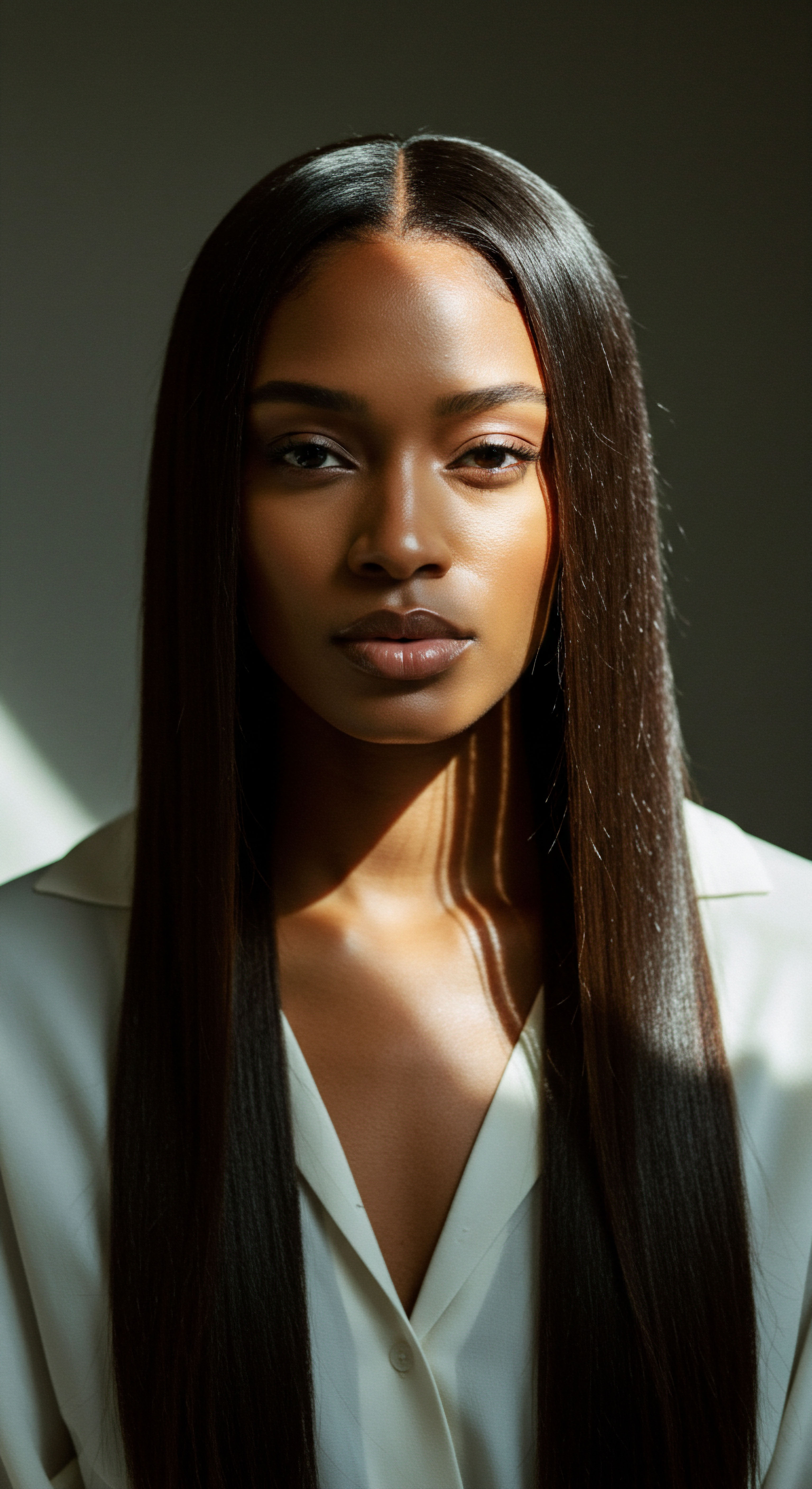
Roots
The quiet hum of city life, the constant movement of vehicles, and the distant murmur of industry often blend into the background of our daily existence. Yet, beneath this seemingly benign symphony of urbanity, an invisible force silently shapes our world, reaching even the most delicate aspects of our being. Our hair, particularly textured hair with its unique architecture and needs, stands as a sentinel, reflecting the stories of our environment.
Can the very air we breathe, laden with the subtle particulate matter of urban living, truly leave a lasting imprint on the hair’s protective outer layer, the cuticle? This question invites us to look closer, to understand the foundational elements of hair itself and how they stand against the unseen currents of our modern surroundings.

Hair Anatomy and the Cuticle’s Delicate Shield
At the heart of every strand lies a complex structure, a marvel of biological design. The hair fiber, visible to the eye, comprises three primary layers ❉ the medulla, the cortex, and the cuticle. The outermost layer, the Cuticle, serves as the hair’s primary defense, a transparent, scale-like structure composed of dead, overlapping cells. These cells, resembling shingles on a roof, lie flat and smooth when healthy, reflecting light and granting hair its luster and softness.
This arrangement is crucial for preventing moisture loss from the inner cortex and shielding it from external aggressors. When the cuticle is compromised, these scales lift, leading to a rougher surface, diminished shine, increased tangling, and a greater propensity for breakage. This outer layer is the first point of contact for anything the hair encounters, including airborne particles and gases.
Textured hair, with its diverse curl patterns, presents an additional layer of consideration. The natural bends and twists in textured strands mean that the cuticle scales may not lie as uniformly flat as on straight hair, potentially creating more opportunities for particulate matter to settle and adhere. This inherent characteristic, while contributing to the hair’s distinctive beauty, might also influence its susceptibility to environmental stressors. Understanding this foundational architecture is essential for appreciating the subtle yet significant ways urban air pollution can interact with our hair.

Hair Growth Cycles and External Influences
Hair growth is a continuous, cyclical process, moving through anagen (growth), catagen (transition), and telogen (resting) phases. While this cycle is largely governed by internal biological signals, external factors, including environmental stressors, can influence its rhythm and the health of new hair emerging. Pollutants do not merely sit on the hair’s surface; they can infiltrate deeper, potentially impacting the hair follicle and the very proteins responsible for healthy growth.
The hair cuticle, a protective outer layer, is the initial barrier against urban air pollution, and its integrity is paramount for strand health.

Initial Interaction of Pollutants with Hair
Urban air pollution is a complex cocktail of particulate matter (PM), volatile organic compounds (VOCs), nitrogen oxides (NOx), and heavy metals. These minuscule elements, particularly PM2.5 and PM10 (particles with diameters of 2.5 and 10 micrometers or less, respectively), are small enough to settle on the hair shaft and scalp. Once deposited, these pollutants do not simply wash away with a light breeze. They adhere to the hair surface, potentially disrupting the delicate lipid layer that provides natural protection and smoothness.
The interaction begins at a superficial level, where particles can cause physical abrasion as hair strands move and rub against each other or external surfaces. Beyond physical adhesion, the chemical constituents within these pollutants can initiate more profound changes. For instance, polycyclic aromatic hydrocarbons (PAHs), often adsorbed onto particulate matter, can induce the production of reactive oxygen species (ROS). This oxidative stress is a primary mechanism through which pollution begins its subtle assault on the hair’s structural integrity, including the cuticle.
A study revealed that the concentration of particulate matter and heavy metals detected on hair and scalp can be 1.5 to 2 times greater than that in the surrounding air, underscoring hair’s capacity to accumulate these environmental aggressors. This accumulation means that even seemingly low levels of ambient pollution can translate into a significant burden on the hair over time, laying the groundwork for potential long-term damage.
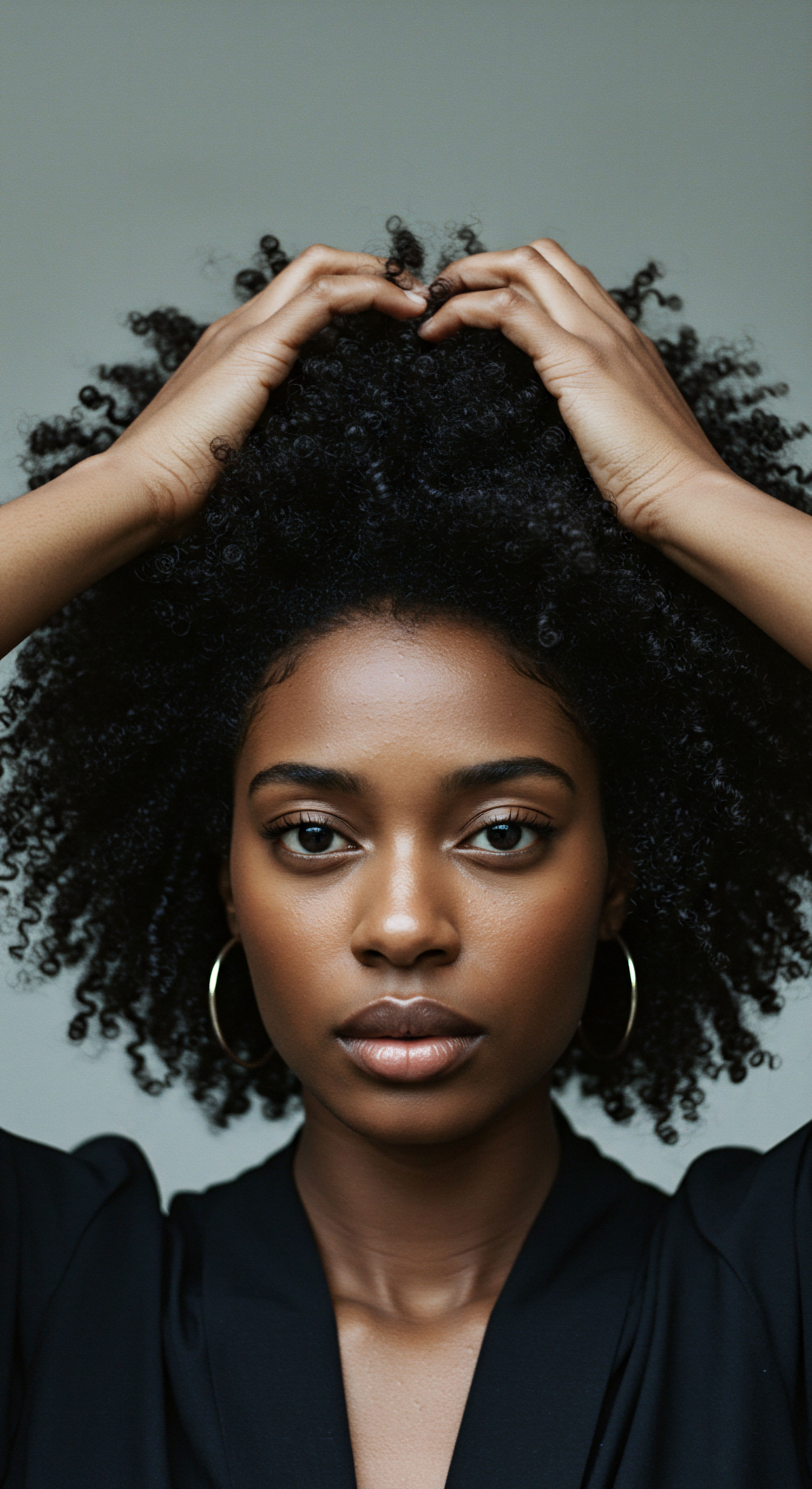
Ritual
In the bustling rhythm of urban life, where every day brings its own set of demands and discoveries, our hair quietly bears witness to the world around us. Beyond the foundational science, the daily practices and thoughtful routines we adopt hold a quiet power, serving as a shield against the unseen forces that seek to diminish our hair’s vibrancy. This section delves into the practical wisdom of care, transforming routine into ritual, offering guidance on how to preserve the cuticle’s serenity amidst the city’s atmospheric currents. It is a gentle invitation to explore how mindful practices can fortify our strands, honoring their natural resilience.
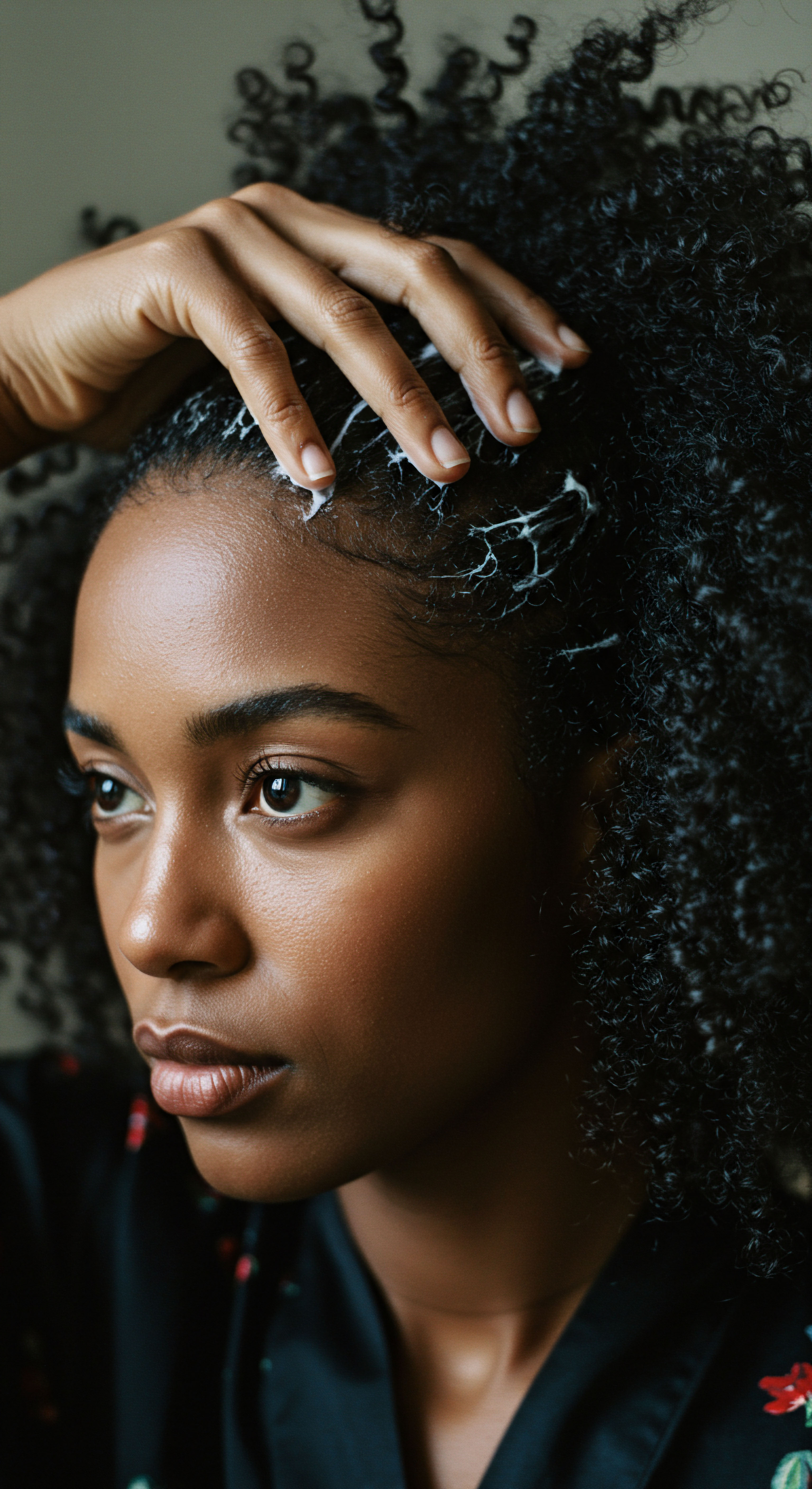
Building Personalized Textured Hair Regimens for Urban Living
The urban environment demands a proactive approach to hair care, especially for textured hair types which may be more susceptible to environmental aggressors due to their structural characteristics. A personalized regimen begins with understanding the specific challenges posed by urban air pollution ❉ particulate matter accumulation, oxidative stress, and moisture depletion.
Cleansing becomes more than just removing styling products; it transforms into a vital step for purifying the hair and scalp from deposited pollutants. Regular, yet gentle, washing with sulfate-free shampoos is paramount to clear away particulate matter, toxins, and excess sebum without stripping the hair’s natural oils. For textured hair, balancing cleansing efficacy with moisture retention is key.
Conditioning and moisturizing are equally critical. Pollutants can compromise the hair’s lipid barrier, leading to dryness and brittleness. Deep conditioners, leave-in treatments, and hair masks rich in antioxidants and humectants can help restore moisture, fortify the cuticle, and create a protective barrier against airborne aggressors. Ingredients like Hyaluronic Acid, Glycerin, and natural oils can draw moisture into the hair, while antioxidants such as Vitamins C and E can neutralize free radicals generated by pollution.

The Nighttime Sanctuary Essential Sleep Protection
The period of rest offers a prime opportunity for hair protection and recovery. Just as we seek refuge from the day’s elements, our hair benefits from a similar sanctuary. Nighttime care rituals are not merely about preserving a style; they are about shielding the hair from friction, maintaining moisture, and allowing the cuticle to rest undisturbed.
Using silk or satin bonnets, scarves, or pillowcases creates a smooth, low-friction surface that minimizes snagging and breakage, which can otherwise lift and damage the cuticle. This practice is particularly beneficial for textured hair, as it helps to preserve curl patterns and prevent frizz, while also keeping environmental particles that might have settled during the day from transferring to bedding and then back to hair. The non-absorbent nature of silk and satin also helps retain the hair’s natural moisture, a vital defense against pollution-induced dryness.

Ingredient Deep Dives for Textured Hair Needs
Selecting products with targeted ingredients can significantly bolster hair’s resilience against pollution. Beyond general cleansing and moisturizing, certain compounds offer specific protective or reparative qualities.
- Antioxidants ❉ Compounds like green tea extract, vitamin C, vitamin E, and ferulic acid actively combat oxidative stress caused by pollutants, protecting hair proteins and lipids from degradation.
- Chelating Agents ❉ Ingredients such as EDTA or phytic acid can help remove heavy metal deposits and mineral buildup from hard water, which often accompanies urban pollution and can further compromise cuticle health.
- Film-Forming Polymers ❉ Certain natural or synthetic polymers can create an invisible barrier on the hair surface, preventing particulate matter from adhering and forming a protective shield against external stressors.
- Humectants and Emollients ❉ Ingredients like Aloe Vera, Shea Butter, and various plant oils provide deep hydration and seal the cuticle, improving its smoothness and reducing porosity.
A thoughtful selection of products, aligning with these ingredient categories, transforms daily care into a strategic defense, supporting the hair’s inherent strength and beauty against the challenges of the urban atmosphere.
Intentional cleansing and moisturizing, coupled with nighttime protection, serve as practical pillars in safeguarding hair from urban atmospheric challenges.

Protective Styling as a Shield
Beyond product choices, certain styling techniques offer a physical layer of defense for textured hair. Protective styles, such as braids, twists, buns, or updos, minimize the hair’s direct exposure to the environment. By tucking away the delicate ends and reducing the overall surface area exposed to the air, these styles can lessen the accumulation of particulate matter and reduce the impact of oxidative stressors.
When considering protective styles, it is essential to ensure they are truly protective, meaning they do not cause excessive tension on the scalp or hair strands, which could lead to breakage or traction alopecia. The goal is to create a harmonious balance between shielding the hair from external elements and promoting its internal health. Regular rotation of styles and allowing the hair to breathe between installations are also key practices.
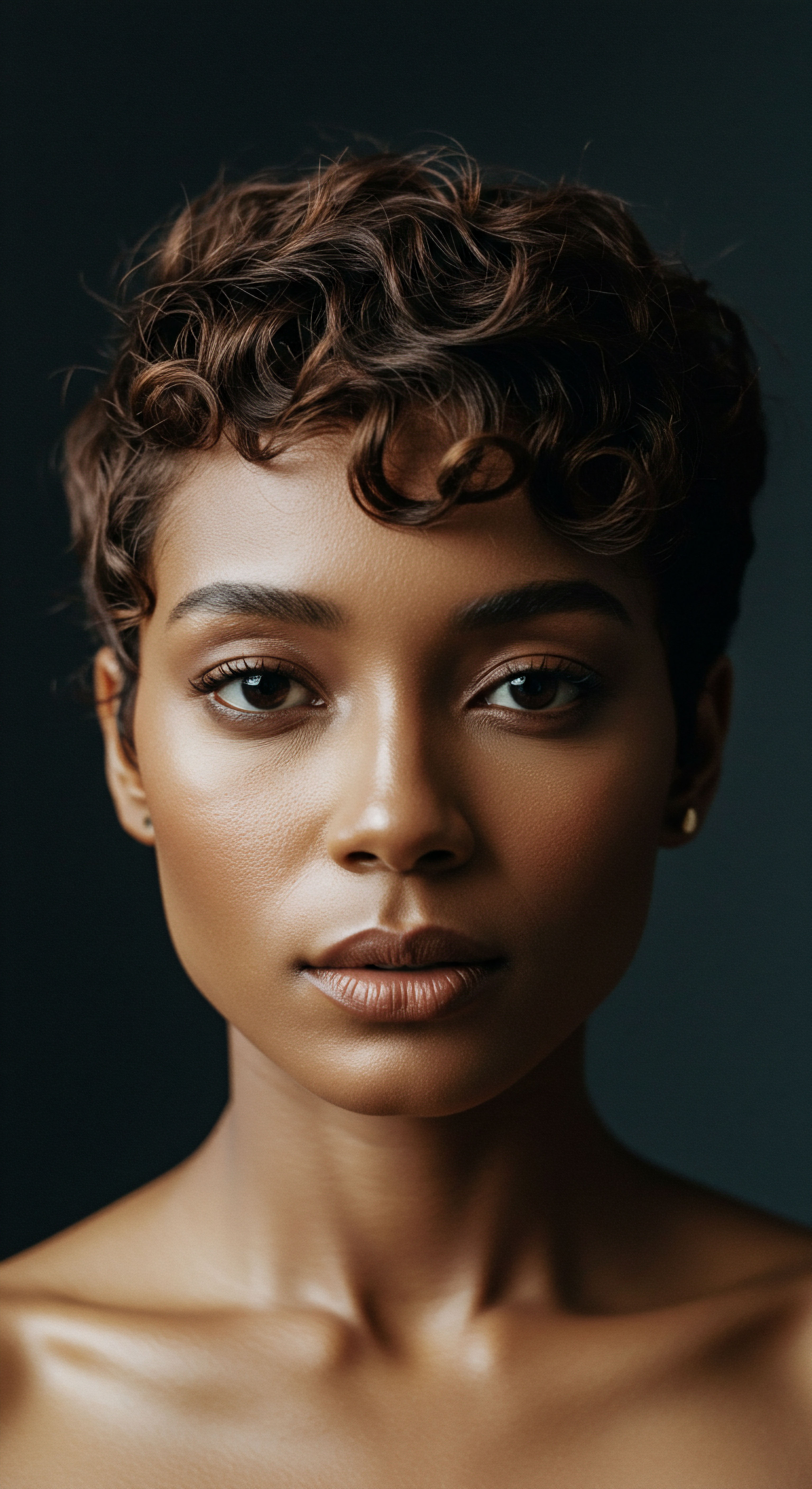
What Daily Habits Can Reduce Pollution’s Impact on Hair Cuticles?
The cumulative effect of daily exposure means that small, consistent habits yield significant benefits. One primary habit involves routine hair washing, especially after prolonged outdoor exposure. While some may worry about over-washing, using mild, moisturizing shampoos can effectively remove pollutants without stripping the hair. Consider incorporating a pre-shampoo treatment or a rinse with filtered water if hard water is a concern in your area.
Another habit involves minimizing direct exposure. Wearing hats, scarves, or other head coverings when spending extended periods outdoors can create a physical barrier against airborne particles. This is a simple yet effective measure, particularly in areas with high pollution levels.
Furthermore, avoiding excessive heat styling, which can already compromise cuticle integrity, becomes even more important when hair is already under environmental stress. The combination of heat damage and pollution can exacerbate the breakdown of hair proteins, leading to increased fragility and breakage.
Finally, cultivating an awareness of air quality reports can inform daily decisions. On days with particularly high pollution forecasts, one might opt for a protective style, choose indoor activities, or adjust their cleansing routine to offer additional support to their hair. This informed approach allows for a more responsive and effective defense against the subtle, pervasive effects of urban air pollution on the hair cuticle.

Relay
As we move beyond the foundational understanding of hair and the practicalities of care, a deeper inquiry into the intricate interplay between urban air pollution and hair cuticle damage unfolds. This is where the unseen forces of our environment meet the very molecular architecture of our strands, revealing complexities that extend beyond surface-level concerns. We delve into the precise scientific mechanisms, drawing connections to broader societal contexts and challenging conventional perspectives. This section invites a closer examination of how science, culture, and our lived experiences converge in the story of hair health amidst the urban atmospheric landscape.

Scientific Mechanisms of Pollution-Induced Cuticle Damage
The journey of urban air pollutants from the atmosphere to the hair cuticle involves a series of sophisticated chemical and physical interactions. The primary culprits include Particulate Matter (PM), such as fine dust and diesel exhaust particles, and gaseous pollutants like Nitrogen Oxides (NOx), Sulfur Dioxide (SO2), and Volatile Organic Compounds (VOCs). These elements do not merely rest on the hair; they actively engage with its structure.
One of the most significant mechanisms is the induction of Oxidative Stress. Pollutants generate reactive oxygen species (ROS), also known as free radicals, which are unstable molecules that seek to stabilize themselves by damaging cellular components, including proteins and lipids within the hair fiber. The cuticle, being the outermost layer, is particularly vulnerable to this oxidative assault.
This damage can lead to the degradation of the 18-methyleicosanoic acid (18-MEA) layer, a crucial lipid layer on the cuticle surface that provides hydrophobicity, smoothness, and shine. Its degradation results in a more hydrophilic (water-attracting) surface, making hair more susceptible to further damage and less manageable.
Beyond oxidative stress, particulate matter can physically adhere to the hair surface, causing Abrasion and Friction. This constant rubbing can mechanically lift and chip away at the cuticle scales, disrupting their smooth, overlapping arrangement. This physical damage creates rough spots, leading to increased tangling, frizz, and a dull appearance.
Furthermore, some pollutants, particularly polycyclic aromatic hydrocarbons (PAHs) and heavy metals, can penetrate the hair shaft and accumulate within, causing chemical damage to the internal protein structure, including keratin. This internal degradation weakens the hair from within, making it more prone to breakage, even if the cuticle appears superficially intact.

Long-Term Morphological Changes to Hair Structure
The sustained exposure to urban air pollution precipitates measurable long-term changes in hair morphology. When the cuticle is repeatedly assaulted by oxidative stress and physical abrasion, its scales lift, become shredded, and even detach. This alteration is not merely cosmetic; it fundamentally compromises the hair’s ability to retain moisture and protect its inner cortex. The hair becomes noticeably rougher, less elastic, and more brittle, leading to increased split ends and breakage.
Research has shown that hair fibers exposed to higher concentrations of pollutants exhibit increased damage to both the cuticle and cortex. A study simulating polluted environments found that virgin hair exposed to cigarette smoke (as a proxy for pollution) experienced significant chemical damage to the cuticles, protein degradation, and a more hydrophilic surface, with the cuticles becoming severely shredded and raised compared to smooth, intact control samples. This highlights the direct, visible impact on the hair’s protective outer layer over time.
Moreover, pollution can impact the hair follicle itself. Studies have linked particulate matter exposure to a decrease in essential proteins for hair growth, such as Beta-Catenin, Cyclin D1, Cyclin E, and CDK2. These proteins are vital for the hair growth cycle and morphogenesis.
A reduction in their levels can lead to weakened hair roots, impaired hair formation, and even hair loss over time. This suggests that the long-term impact of pollution extends beyond the visible hair shaft, potentially affecting the very source of new hair.

Can Urban Air Pollution Exacerbate Hair Health Disparities Across Communities?
The burden of urban air pollution is not evenly distributed, and this unevenness can indeed exacerbate hair health disparities, particularly within communities of color. Historically, marginalized communities, often comprised of a higher percentage of individuals with textured hair, have been disproportionately located near industrial zones, major roadways, and other sources of significant air pollution. This phenomenon, often termed Environmental Injustice, means that these populations experience higher and more chronic exposure to particulate matter, heavy metals, and other airborne toxins.
For textured hair, which, as discussed, may possess inherent structural characteristics that could make it more susceptible to pollutant adherence and moisture loss, this increased exposure creates a compounding challenge. The combination of environmental stressors with potential socio-economic factors, such as limited access to specialized hair care products, trichological services, or even simply reliable clean water, can deepen these disparities. For instance, studies have shown that the incidence of alopecia areata, a type of hair loss, is significantly higher in urban, industrialized areas compared to rural regions. While this correlation is multifactorial, pollution is recognized as a contributing factor.
Consider a compelling, albeit perhaps uncomfortable, data point ❉ Research from the Polish Journal of Environmental Studies indicates that the concentration of particulate matter and heavy metals detected on hair and scalp can be 1.5 to 2 Times Greater Than That in the Surrounding Air. While this specific study may not explicitly segment by hair type or ethnicity, it underscores the universal principle of pollutant accumulation on hair. When this principle is applied to communities facing higher ambient pollution levels due to environmental injustice, the implication is clear ❉ individuals in these areas, often those with textured hair, are likely accumulating a greater burden of pollutants on their hair and scalp, potentially leading to more pronounced and persistent cuticle damage and associated hair health issues. This silent accumulation, combined with pre-existing vulnerabilities, paints a picture of unequal environmental impact on hair wellness.
Urban pollution induces oxidative stress and physical abrasion, leading to shredded cuticles, compromised protein structures, and potentially affecting hair growth at the follicle level.
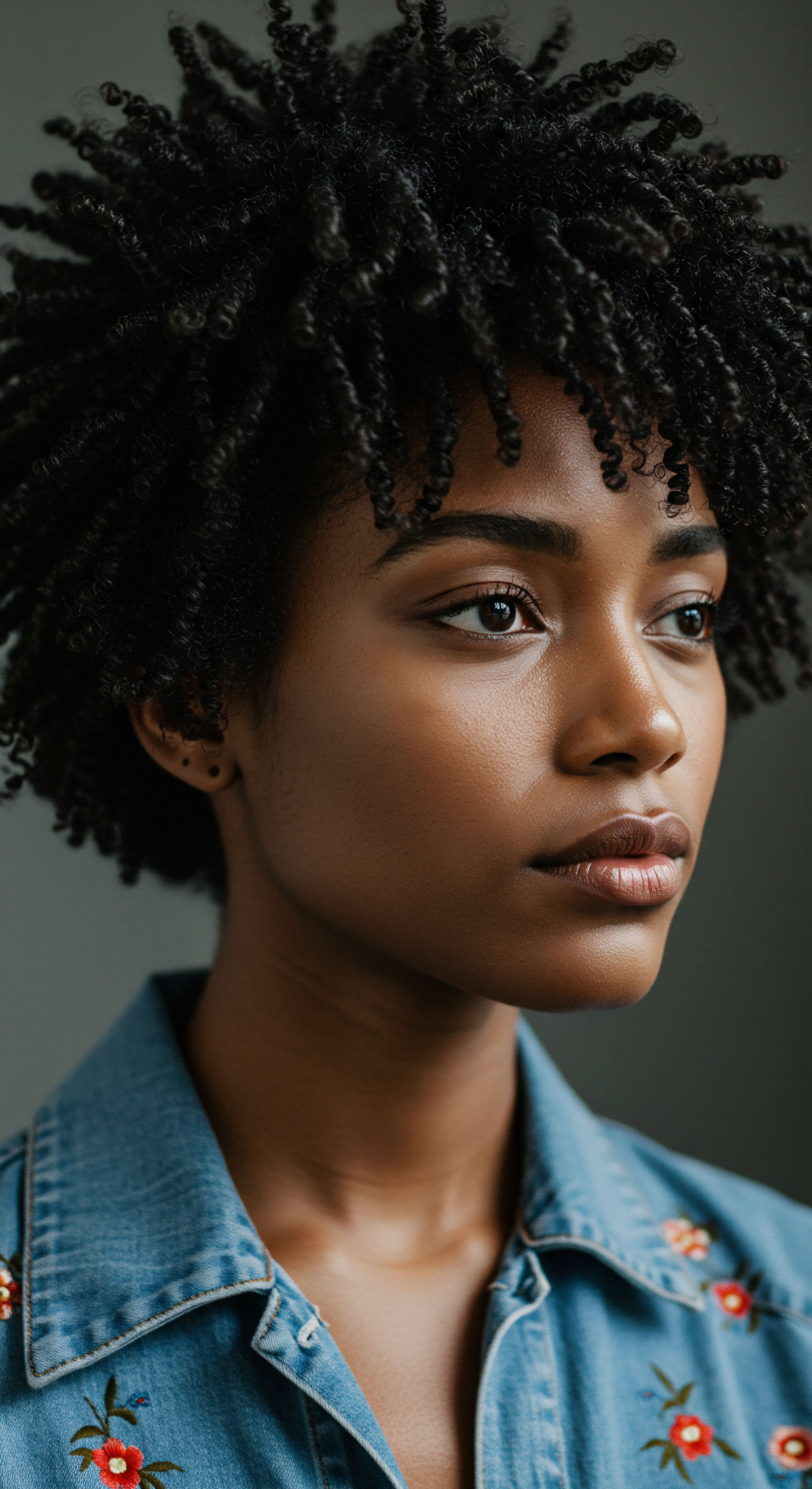
The Interplay of Pollutants and Hair Care Practices
The effects of urban air pollution are not isolated; they interact with existing hair care practices, sometimes amplifying damage or requiring adjustments to traditional routines. For instance, individuals who frequently use heat styling tools may find their hair even more vulnerable to pollution’s effects. Heat can already compromise the cuticle and denature hair proteins, creating a weakened state that is less resilient to oxidative stress from airborne particles. Similarly, certain chemical treatments like relaxers or strong dyes can alter the hair’s structural integrity, making it more porous and potentially allowing for deeper penetration and accumulation of pollutants.
This interconnectedness highlights the need for a holistic approach to hair health in urban environments. It calls for a deeper understanding of how our styling choices and chemical processes might inadvertently open the door to greater environmental harm. Conversely, it underscores the protective power of thoughtful routines, as previously discussed, which can act as a buffer against these cumulative assaults. The challenge, and the opportunity, lies in harmonizing our hair care traditions and modern scientific understanding to build true resilience against the urban atmospheric landscape.
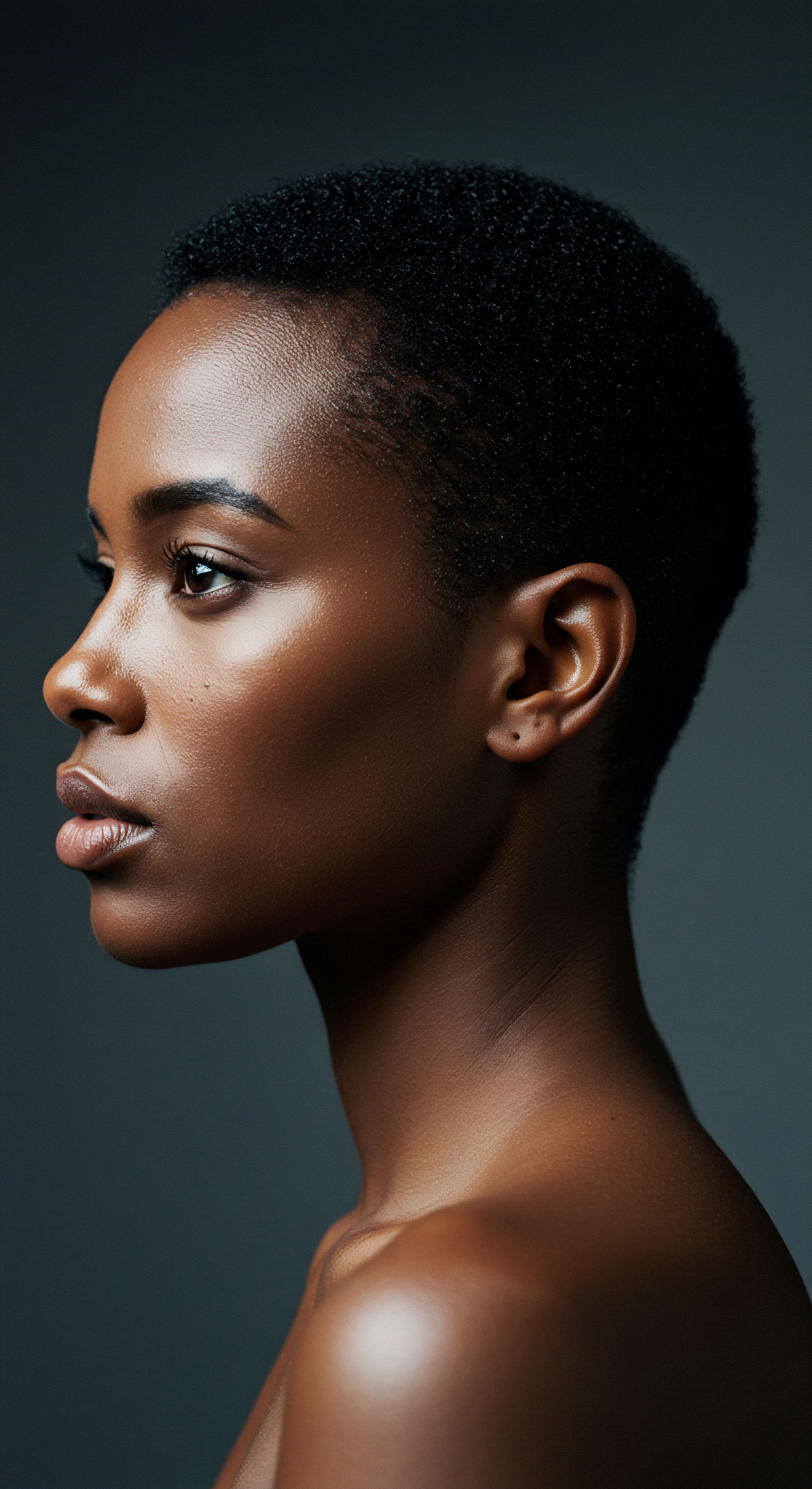
Reflection
The journey through the intricate world of urban air pollution and its quiet dialogue with our hair’s cuticle reveals a truth both sobering and empowering. We have peeled back layers, from the microscopic architecture of a single strand to the broad strokes of environmental justice, recognizing that our hair, a personal expression of heritage and identity, is also a delicate barometer of the world we inhabit. The city’s breath, laden with unseen particles, does indeed leave its mark, challenging the cuticle’s serene surface and the vitality of the follicle beneath. Yet, in this understanding, a quiet strength emerges.
Knowledge, woven into ritual and informed by science, offers pathways to preservation. It invites us to move through our urban landscapes not with fear, but with a deeper reverence for our strands, armed with the wisdom to protect, to nourish, and to celebrate their enduring resilience against the backdrop of modern life.

References
- “Is Pollution Ruining Your Hair? Learn About its Impact on Hair Health.” Trichology. (2024-07-22).
- “The Invisible Threat to Hair and Scalp from Air Pollution.” Polish Journal of Environmental Studies. Eunhye Son, Ki Han Kwon. Vol. 34, No. 2 (2025), 1745-1753. DOI ❉ 10.15244/pjoes/188036. (2024-08-05).
- “The Impact of Environmental Factors on Hair Health ❉ What You Need to Know.” Trichology. (2024-06-21).
- “Air pollution may be causing your hair to fall out.” (2019-10-08).
- “Environmental Factors, Pollution and Hair Loss.” Emerge Trichology.
- “Air pollution linked to hair loss, new research reveals.” EurekAlert! (2019-10-08).
- “Clearing the Air ❉ Pollution Induced Hair fall Treatments and Tips.” Dr Venus. (2023-10-21).
- “How Does Pollution Influence Hair Loss?” Capilclinic USA Blog.
- “Hair Loss Caused by Air Pollution ❉ How to take care of your scalp?” (2020-03-27).
- “The Negative Effects Pollution Has on Hair and How to Protect Your Strands.” NewBeauty. (2022-03-31).
- “The impact of airborne ultrafine particulate matter on human keratinocyte stem cells.” Int J Cosmet Sci. Labarrade F, Meyrignac C, Plaza C, Capallere C, Botto J-M, Imbert I. 2023 Apr;45(2):214-223. DOI ❉ 10.1111/ics.12833. (2023-03-03).
- “The Effects of Environmental Pollutants and Exposures on Hair Follicle Pathophysiology.” Current Problems in Dermatology. (2024-04-17).
- “The Invisible Threat to Hair and Scalp from Air Pollution.” Polish Journal of Environmental Studies. (2024-08-05).
- “Pollution Damage and Protection of Asian Hair.” MDPI. (2018-02-01).
- “Impact of Environmental Stressors on Hair.” NYSCC. (2021-07-12).
- “Particulate Matters Induce Apoptosis in Human Hair Follicular Keratinocytes.” PMC. (2018-08-28).
- “5 reasons why you should protect your hair from air pollution.” RAUSCH. (2024-04-22).
- “Protein Carbonylation as a Reliable Read-Out of Urban Pollution Damage/Protection of Hair Fibers.” MDPI. (2018-07-26).
- “How Air Pollution Causes Hair Loss & How to Protect It.” monpure. (2023-04-26).
- “Does Air Pollution Cause Hair Loss? ❉ Effects of Pollutants.” Theradome. (2024-11-20).
- “Air Pollution Linked to Hair Loss.” RT – Respiratory Therapy. (2019-10-09).
- “How City Livings Harms Hair and Scalp Health.” monpure. (2022-01-15).
- “The impact of oxidative stress on hair.” ResearchGate. (2024-10-22).
- “Hair Invisible Damages.” Juniper Publishers. (2024-01-02).
- “Environmental Disruptors and Your Hair ❉ Understanding the Hidden Threats to Hair Health.” (2024-09-04).
- “How Is Pollution Damaging Your Hair?” 100% PURE. (2024-05-20).
- “Particulate matter (PM’s) adheres to human hair exposed to severe aerial pollution ❉ Consequences for certain hair surface properties.” ResearchGate. (2024-11-21).
- “How to stop pollution from ruining your hair.” Vogue Scandinavia. (2023-01-15).
- “The Impact of Oxidative Stress on Scalp and Hair Health.” monpure. (2022-02-19).
- “Air pollution contributes to hair loss, study finds.” Cosmetics Business. (2019-10-10).
- “Causes of Hair Loss.” The Institute of Trichologists.